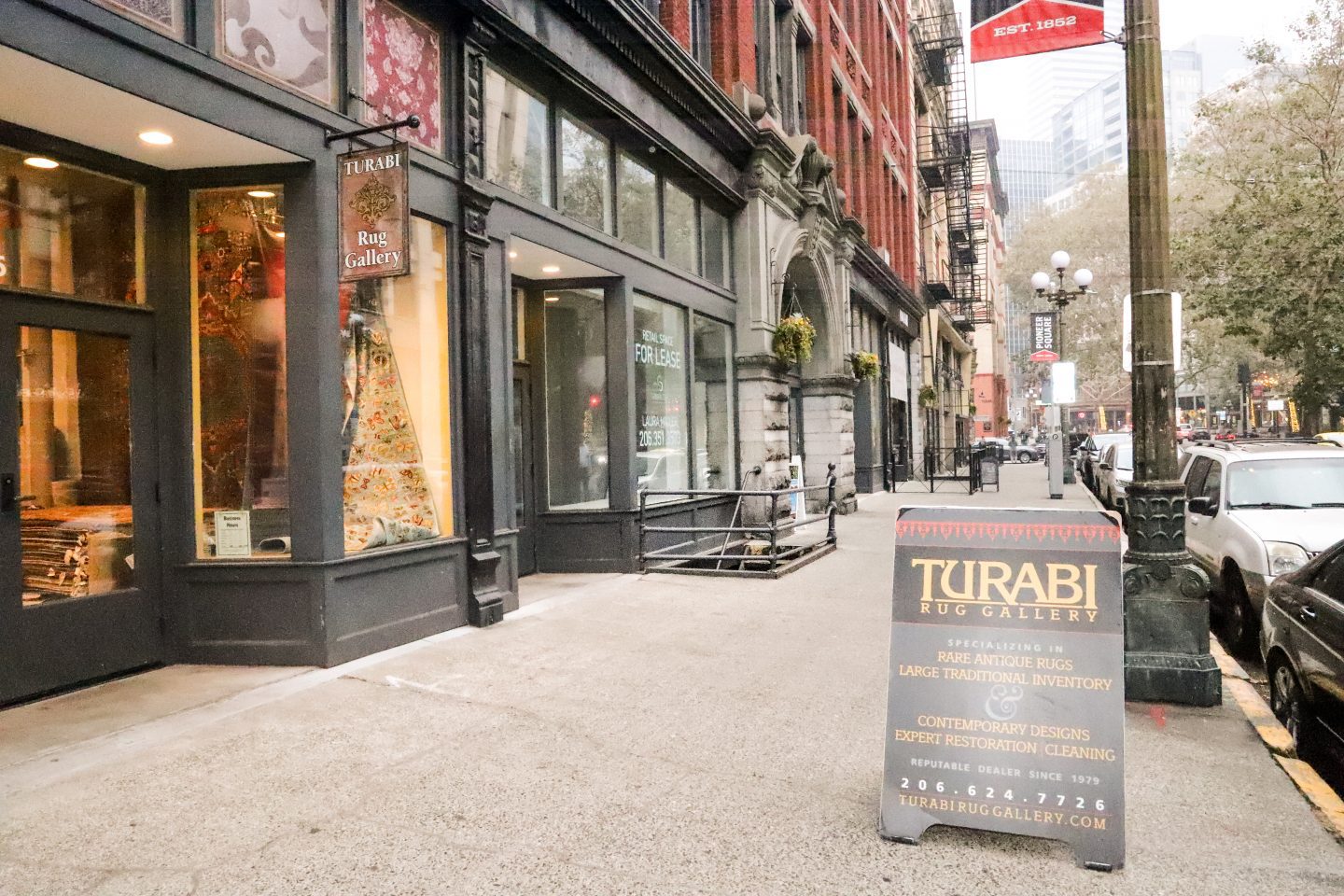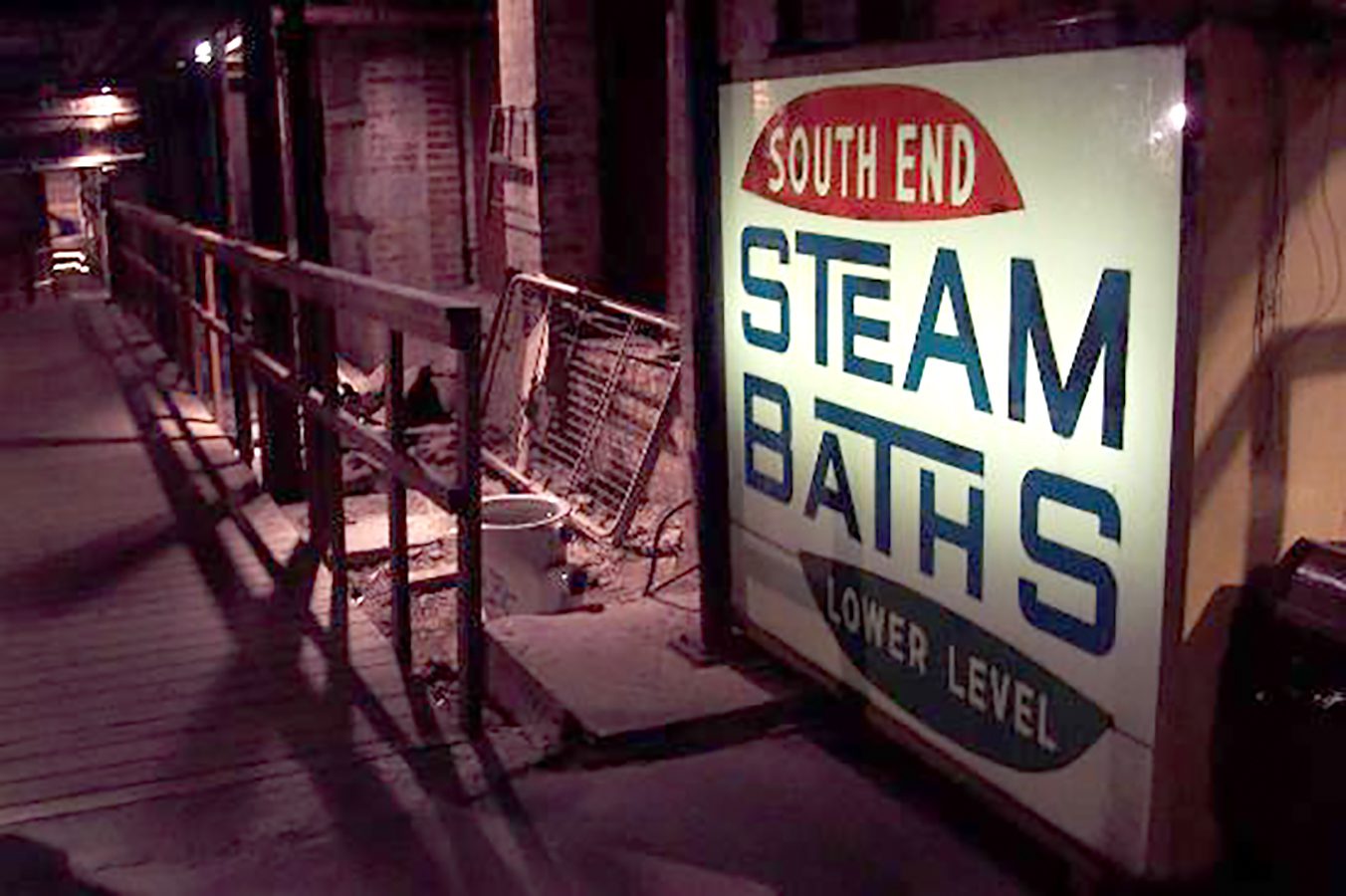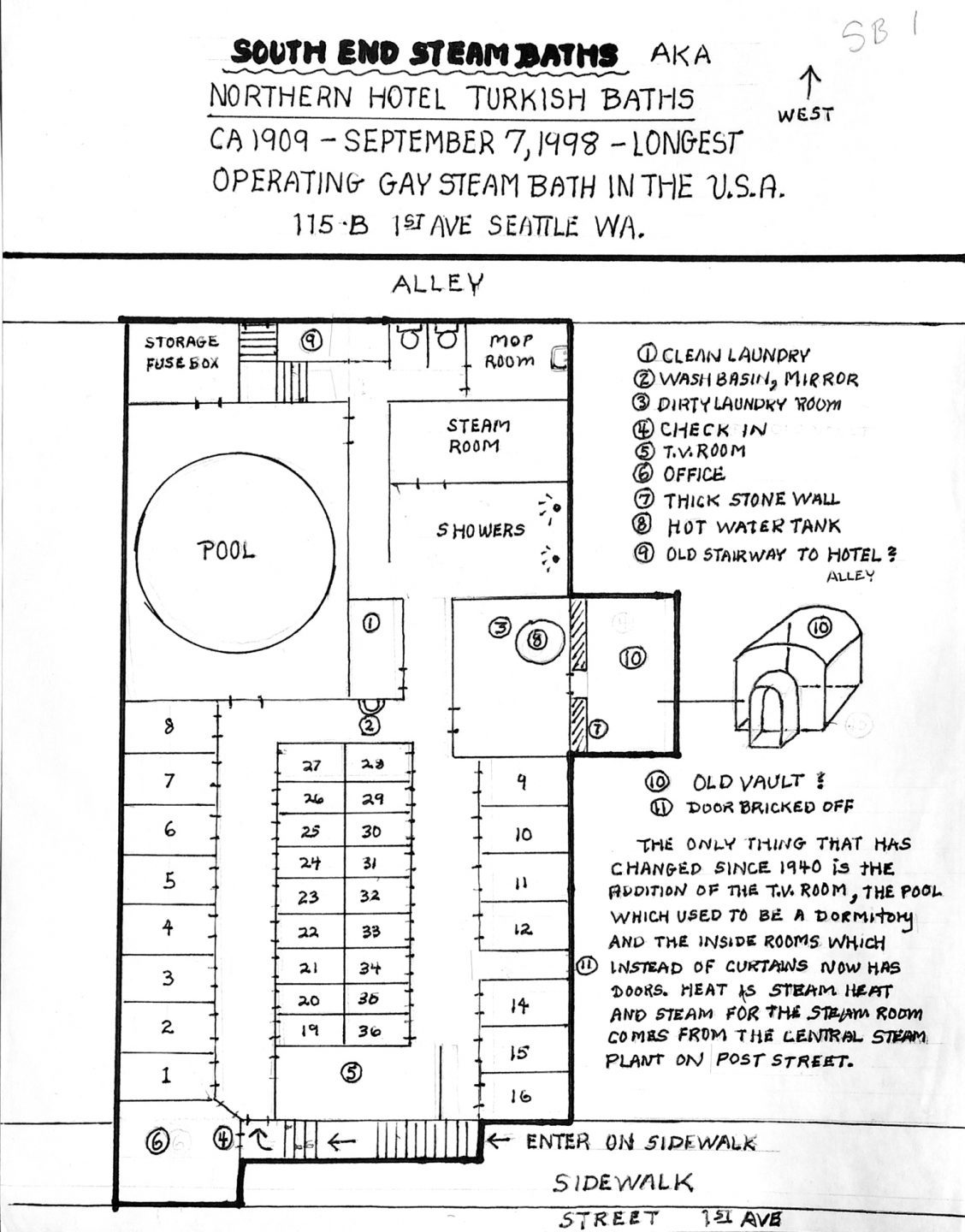-
South End Steam Baths
115 1/2 1st Avenue S
The area’s LGBTQ+ people knew a good opportunity when it arrived, so when the Turkish Bath at the Northern Hotel closed in the 1940s, Pioneer Square gained a new space for gay men to gather. The baths were in the basement of the Northern, a large red-brick-and-gray-stone high Victorian motel that had been popular during the Alaska Gold Rush. While the sexuality of the bathers who visited during the early 1900s is unknown, at some point around World War II, customers were almost exclusively gay men.
While a bathhouse is often viewed as a solely sexual space (and indeed, men did have sex there), it was also a social space. As the era of gay civil rights dawned, other bathhouses that served gay men opened in Seattle, though South End, with its longer history, tended to draw an older clientele. A sense of community flourished in bathhouses, and some went because they were considered less prone to raids than, say, a bar. In the 1950s and 1960s, the operator of Steam Bath, Edwin McCleary, was also paying off cops, eventually handing over close to $200 a month.
In 1993, South End instituted a women’s night, but by this point, the LGBTQ+ community was facing a crisis far more destructive than a police-payoff scheme: HIV/AIDS. The first local case of the disease was diagnosed in a Seattle man in 1982; by the end of 1991, 321 people in King County had died of AIDS-related complications. The sexual spaces provided by bathhouses brought them to the attention of public-health officials. For LGBTQ+ people, bathhouses became spaces that elicited confusion: Should they remain open? Or close? While some bathhouses operate today, South End could not weather the challenges presented by HIV, and the changing attitudes and practices that followed. It offered the last towel to a customer in September 1998.
For years, the former South End was the basement of a carpet store, but that store closed. The whereabouts of the South End sign are unknown.
From here, walk north and cross through Pioneer Square to our final stop at the corner of 1st and Cherry.



